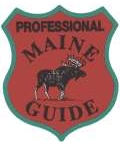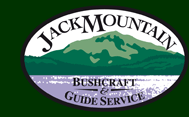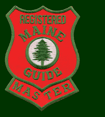There has been a lot of interest in simplifying and preparedness recently as a result of the economic circumstances many are facing. Knowing how to take care of your family, even if the modern conveniences stop working for a while, is something at least one person in each household should know. The good news is that humans are intelligent and adaptable. We made it through all of history without the modern “necessities” such as running water and flush toilets, and living without them now need not be a huge hardship. Many people enjoy camping, which is doing without modern conveniences by choice.
I’ve never liked the term preparedness, so instead I usually describe it as what it takes to keep a person healthy and reasonably happy regardless of their location or circumstances. These ideas have been developed over ten years of running semester courses in remote locations and watching people deal with the stresses of cold, hunger, lack of sleep, etc.
What It Takes To Survive
Basic survival knowledge consists of what it takes to maintain your body temperature, stay hydrated, and get enough sleep. If you can accomplish these three things, you’ll live a minimum of 40 days.
Survival Equation: body temperature + sleep + hydration = 40 days
For the long term, you’ll need to have food stored or learn how to grow-raise-gather-fish-hunt-trap your own.
Wants Vs. Needs And The Inertia Of The Human Mind
One of the intangible qualities of survivors is that they are able to recognize when a situation is different than the norm, and when then need to change their behavior by adapting to the new circumstances. In the case of fatal accidents, I don’t think most people are afraid – I think they’re surprised. They weren’t aware of the numerous small things that contributed to the deadly situation that developed. Being unaware, they continued operating with their ordinary behavior. Not adapting to the changed circumstances is what initiated their downfall.
We’re up against the inertia of the mind. It is difficult to change your thinking, but in many cases that’s what needs to be done. The good news is that once you get your head wrapped around a problem it isn’t quite so frightening.
We have a lot of wants in the modern world, but our needs are the same as they were 100 or 1000 years ago. Once you know what your needs are, you can set about procuring them.
Step 1: Identify your needs. I believe our needs are limited to:
- Warm microclimate
- Enough sleep
- Enough food and water
- Sanitation
- Companionship
Step 2: Learn how to procure them with minimal, locally-produced inputs
Specific Technologies And Strategies
Our modern lives and lifestyles in this country (USA) are predicated on cheap oil, cheap electricity, and the availability of countless other inputs. As the availability of one or more of these factors is reduced, we need to adapt. One way to do this is to design alternate systems with minimal inputs. For the short term, such as during a natural disaster, it’s analogous to camping in your home. When the plumbing stops working, the furnace shuts down, and there’s no electricity, what will you do?
A. Microclimate. Staying Warm In The Cold.
We design big houses and live rather luxuriously, but there are numerous inputs required to keep them working such as oil, gas and/or electricity. Yet I’ve managed to live comfortably in the bush of Quebec, New Brunswick and Northern Maine at – 40 F in comfortably warm conditions. How? By heating a small area with a locally available material. In my case, I heated a canvas tent with a small wood stove. The lesson is to have a small space you can heat with a small stove. The space can be a tent, shelter, or room in your house. You can also cook on a woodstove. Think small. 10 x 12 or so is plenty. You should be able to sit, sleep the whole family, and have a little extra space for some pots and water. The smaller space you have to heat, the less material it takes to heat it.
B. Sleep
You need a certain amount of sleep to remain rational. Even if you don’t have a hot room, you should have a warm nest to curl up in at the end of the day. A restful night of warm, dry, sleep allows us to put up with a lot during the day. It makes camping in difficult conditions tolerable. Investing in a good sleeping bag, several marginal sleeping bags, a bunch of blankets, or some other way to keep warm when it’s cold pays off on the first night of sleeping in the cold.
C. Water
Drinking adequate amounts of pure water is a prerequisite for survival and general health. When the tap stops working, there are several options. First, you can purify locally available water sources such as streams and lakes. There are countless water purification devices commercially available. If you don’t have one, bring the water to a rolling boil. This will kill any pathogens, but won’t filter out chemicals, etc. For that, you have to distill the water. There are plans on the internet for simple distillation rigs which can be made to run on solar power or on a stove-top. Second, you’ll want to catch any precipitation that falls, as this is purer than groundwater. You don’t need a fancy system to do it. At our field school we set up trash cans under the drip line of the roof of our only building because we don’t have a gutter. It works great.
D. Food Storage
Having enough food stored to last a few months isn’t difficult or expensive. We store whole grains, beans, and sunflower seeds in food grade five gallon buckets with Gamma Seal lids. These screw on and keep bugs, critters and water out. It’s much cheaper to buy foods in bulk than it is buy them a pound at a time. For long term rural living with no electricity, traditional food storage methods include drying, freezing (in winter), canning, fermenting, and salting. You can also grow your own fresh vegetables by sprouting seeds and beans, even if you don’t have any land for a garden.
E. Cooking
Cooking can be accomplished in an open fire, on a wood stove, on a propane stove, or in a solar oven. Solar ovens are great because once you have it the only input is sunshine. For grains and beans, more of the food will be digested by your body if you soak it overnight before cooking it. This will also decrease cooking time, saving you fuel.
F. Sanitation
During hurricane Katrina I read that toilets were overflowing because they wouldn’t flush but people were still using them. There’s the inertia of the human mind in action. But other than flushing it, what other options do we have? I’ve been composting it since 1995. It’s simple, cheap, and the only inputs to the system are sawdust(or dead leaves, shredded newspaper, or other dead plant material), hay (or weeds, or other fibrous dead plant material) and rainwater. I use the system described in the Humanure Handbook (available online for free) with a toilet box and a five-gallon bucket. After you use the bucket, cover your deposit with sawdust or some other high-carbon material. When it’s full, dump it on an outdoor compost pile and cover it with hay, weeds, or whatever you’ve got available. Everything (pee, poop, toilet paper) goes into the bucket. We also add food scraps, including meat and bones and other things the compost gurus tell you will ruin your pile. Our rule: If it smells it goes in the compost. For more on this, watch Jack Mountain Bushcraft Journal – Episode 3 on youtube.
For more information on these topics there are numerous books and courses available. If you have questions post them in our online community, the Jack Mountain Bushcraft Network.







